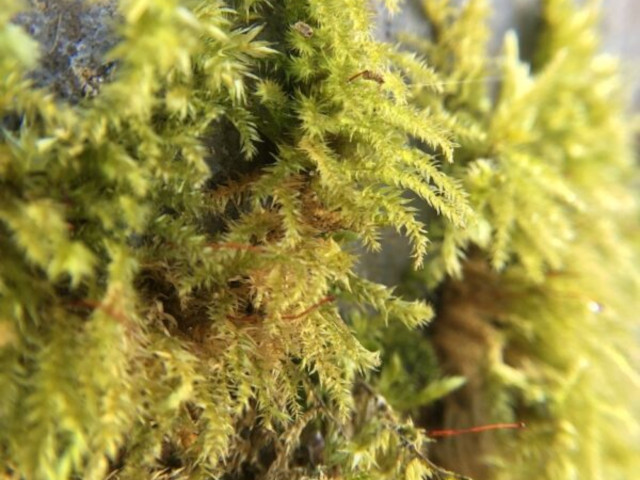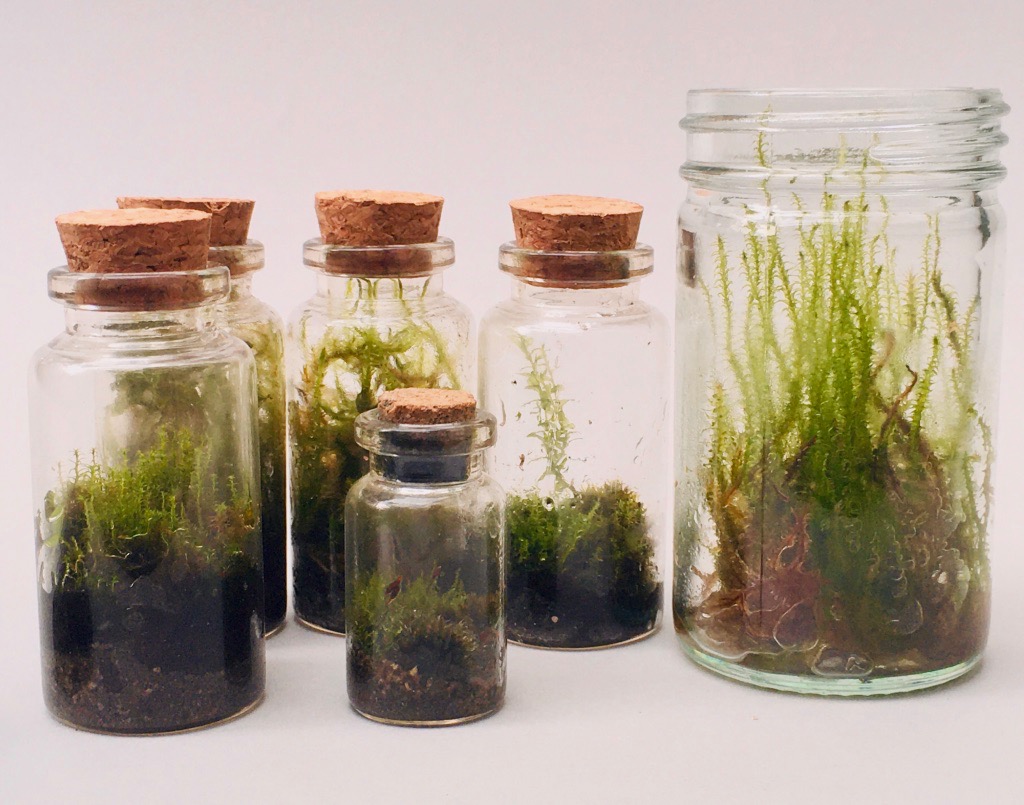Moss Bothering
An art residency exploring the secret life of moss to raise awareness of the unseen nature in the local environments and discuss climate change.
The challenge
Gallery Oldham provides a wide range of exhibitions and activities targeted at different audiences of all ages within Oldham and the surrounding area. Talks and tours, art and craft workshops, work with schools and artist residencies are all part of the gallery’s regular activities programme.
Sphagnum mosses in moorland bogs slowly create peat and have unique biodiversity. Peat bogs help prevent flooding and are also more effective than trees for carbon capture. However, these environments have been degraded by drainage for agriculture and managed (burnt) for game bird shooting and burnt accidentally by humans. Recent flooding and moorland fires on the hills surrounding Oldham, linked to human intervention and climate change, illustrate the importance of maintaining the local ecosystem.
This project aims to draw attention to the natural history collection at the gallery and the role of volunteers in collecting and in doing so, raise awareness of the unseen nature in the local environments to engage audiences in a discussion around climate change.
Research team
- Antony Hall, PhD Candidate, Manchester Metropolitan University
- Patricia Francis, Curator of Natural History Gallery Oldham
- Rebecca Hill, Exhibitions and Collections Curator, Gallery Oldham


The solution
The Placement engaged with local experts (collectors and environmental scientists) and explored the local area through walking and cycling, scientifically collecting specimens, creating field notes, photographs, and maps of local collection sites, both natural and urban.
On account of COVID related restrictions, the primary output was made through blog posts and three ‘Moss Trails’ [guides and maps for walking based on the field work] published on the museum’s website and through regular Instagram posts. 50 new moss specimens were collected which will be added to the collection at a later date (an aspect of the project that is ongoing).
Engaging audiences with the collection through art and science demonstrated how museums could enhance perceptions and amplify the value of lesser noticed, often fragile elements of ecosystems in the urban environment. The findings embodied within the research outputs and new artwork created, which include:
- Macro photographs and film, including time-lapse photography capturing the transformation of the moss as it rehydrates.
- Field recordings capturing the microscopic sounds of moss rehydrating, which has never been recorded.
- A collection of miniature terrariums [a living museum] and the Moss Map, a detailed large scale map drawing based on the fieldwork and documenting the collection sites.
- Plans for new workshops based on collecting moss and making sealed terrariums that can be re-used.
Results and impact
The lasting legacy of this Placement comes through the moss samples collected and the accompanying documentation of the process, which will be added to the collection.
The materials shared via social media draws attention to a lesser noticed aspect of the collection and will provide resources for future use and reference, which can be used or delivered as workshops in the future.
The final artwork work was exhibited at Abingdon Studios Project Space and the Window Gallery in Blackpool, and Rogue Artists’ Studios. These methods and ideas also informed ‘Invisible Alderley’, a project that Anthony worked on in partnership with the National Trust. This work was also presented at the ‘Hospitality’ symposium, and plans are in place to continue the research with Manchester Art Gallery and to provide walking with Anthony’s local community.
A different, slightly distant perspective allowed us to view the collections in a way which we are not usually able to do. Tony’s technical skills were welcome, as was his willingness to engage with a wide variety of people both face-to-face and digitally. […] We loved the moss walk map. The chance to focus closely on one of part of our collection is always useful to us. We thought the moss bottle gardens were a very engaging element of the project, accessible to all ages and abilities and at no cost, as the few items used were either recycled or readily available. We are particularly looking forward to seeing new specimens in the herbarium. We already have a very close working relationship with our local natural history society and Tony was able to successfully collaborate with them and their feedback was very positive. We would happily recommend this type of PhD collaboration to other partners.
Patricia Francis / Curator
This project was a truly unique research experience for me. This project was a truly unique research experience for me. It was challenging to adopt a scientific collecting process and keep careful records of samples. It was challenging at times; I went on many field trips in the bitter cold, torrential rain and, on lucky occasions, sweltering sunny days. […] The project led to a number of new projects and cross overs and useful ideas for future development. Having space away from the PHD was invaluable – my placement crossed over with my submission date and so provided some focus and a post write-up buffer zone for recovery. I would recommend a placement to all PGRs.
Anthony Hall / Manchester Metropolitan University
